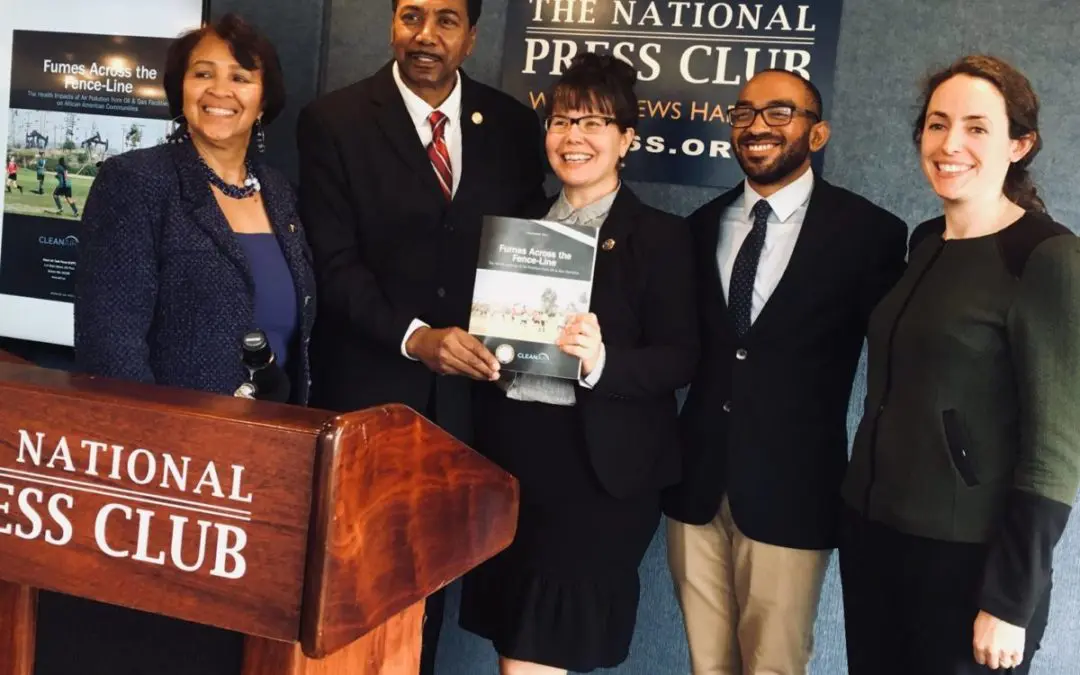On the morning of November 14, 2017, the NAACP’s Environmental and Climate Justice Program, along with the Clean Air Taskforce (CATF) and the National Medical Association (NMA), released Fumes Across the Fence-Line: The Health Impacts of Air Pollution from Oil and Gas Facilities on African American Communities at the National Press Club in Washington D.C. The event, moderated by C. Linwood Jackson, President of the Delaware NAACP State Conference of Branches, featured words from Congressman Al Green [D-TX], Dr. Doris Browne, President of the National Medical Association, and co-authors, Lesley Fleischman (CATF) and Marcus Franklin (NAACP).
The morning’s speakers shed light on acts of environmental racism committed by the oil and gas industry as well as the health impact of toxic pollutants on the African American Community. Congressman Al Green opened the event with a message of reassurance in the face of current environmental injustices and federal role backs of environmental regulations. Green discussed the importance of the Environmental Justice Act of 2017, sponsored by Senator Corey Booker [D-NJ], which would make it easier for communities to sue oil and gas polluters.
About the Study
It is no coincidence that oil and gas facilities are built in African American, low-income, and other communities of color. As the study indicates, corporations and government bodies believe that some communities have less agency, less ability to fight back, and are more susceptible to the lies that oil and gas industries bring “good jobs” to their community. Because of this and other factors of systemic oppression, they build their facilities near African American neighborhoods. This is environmental racism.
More than one million African Americans are poisoned by oil and gas facilities daily and more than 6.7 million African Americans live in counties with oil refineries. And, as the study shows, African Americans in these areas have increased rates of asthma, cancer, and a number of other health problems that result from the toxic stew of pollutants they live and breathe every day. The correlation cannot be ignored.
So what is the solution? We MUST transition in a just, equitable, and sustainable way from the current extractive energy economy—oil and gas, etc.—to a living energy economy that is rooted in clean and renewable energy, and grounded in community ownership, control, and choice of energy resources. It is time to shape an energy future that is not exploitative and does not profit from acts of environmental racism, but one that benefits the communities that it serves and upholds the right to a clean, healthy, pollution-free environment for all.
Read the full study: Fumes Across the Fence-Line
If you want to learn what your local NAACP unit is doing and what you can do to build a living energy economy, visit the NAACP Power to the People Campaign.



